Forgiveness
This story begins and ends with forgiveness.
(But before forgiveness, there are sins, and guilt, and shame, and offences, real or imaginary, and hurts — all wrapped together in a ball of pain, all but impossible to disentangle. Unless there is Art to transform and transmute them with its gentle touch.)
The day before, I was reminded of a simple night-time practice of forgiveness. Just tell yourself, as you are falling asleep:
I forgive everyone who has ever hurt me, including myself.
(Ultimately, isn’t all forgiveness about forgiving oneself?)
So that’s what I did… releasing, layer by layer, all the hurts and sins of this lifetime, and this penchant for punishing and torturing myself by rehearsing them again and again. Going deeper and deeper into the story of my life, into the early childhood (where Russian tentatively replaced English in the mantra I was repeating), I fell asleep.
But later in the night, half-awake again — I saw, in my mind’s eye, the spacious interior of Sagrada Familia, the Holy Family Basilica in Barcelona.

Boundless space
A strange, unique building, envisioned and begun by Antoni Gaudí, but still being constructed, across five generations of architects, artists, builders. The last cathedral of humanity…
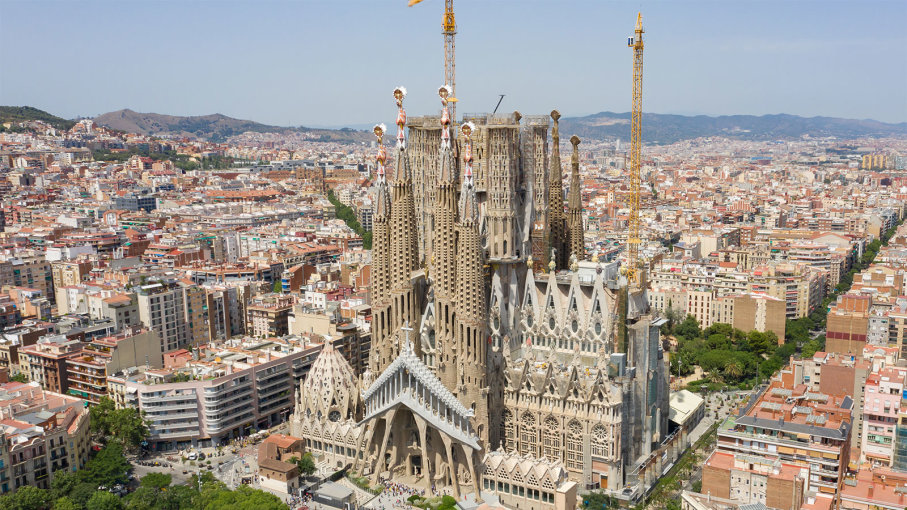
So utterly chaotic its outer expression: it’s all organic growth, a chaos of images, shapes and forms — surrounding and hiding the light and spaciousness of its interior.
In this church, all the stories usually illustrated within Catholic temples have been pushed out from the interior, crowding and overwhelming its four facades.
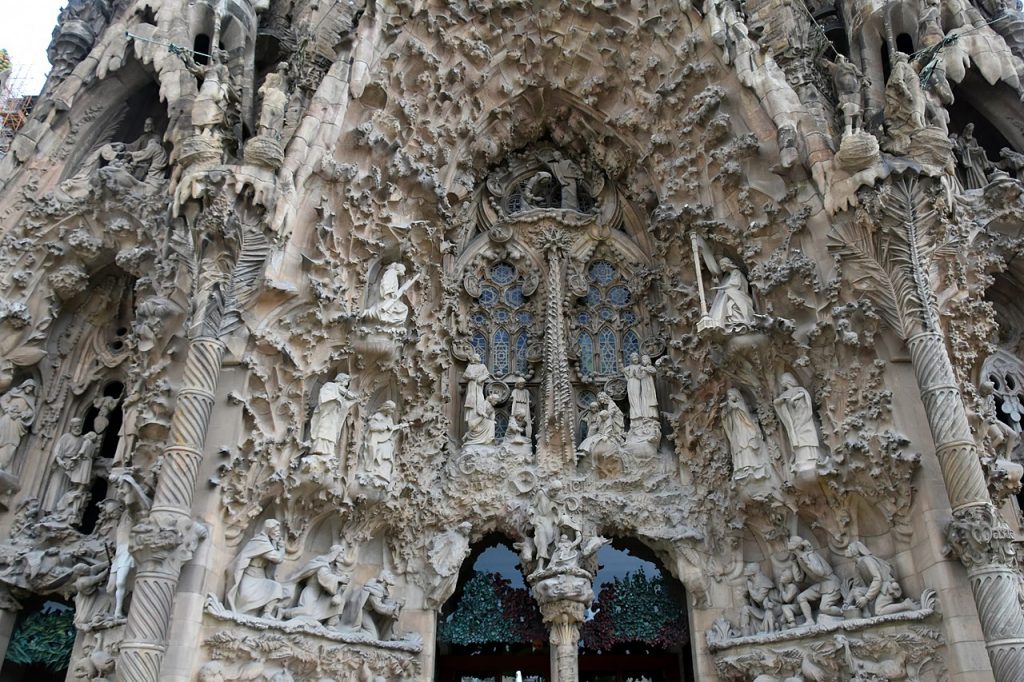
The interior is almost empty, but it is a special kind of interconnected, delicately structured emptiness, in love with its own inner structure, constantly re-creating itself in visual experience.
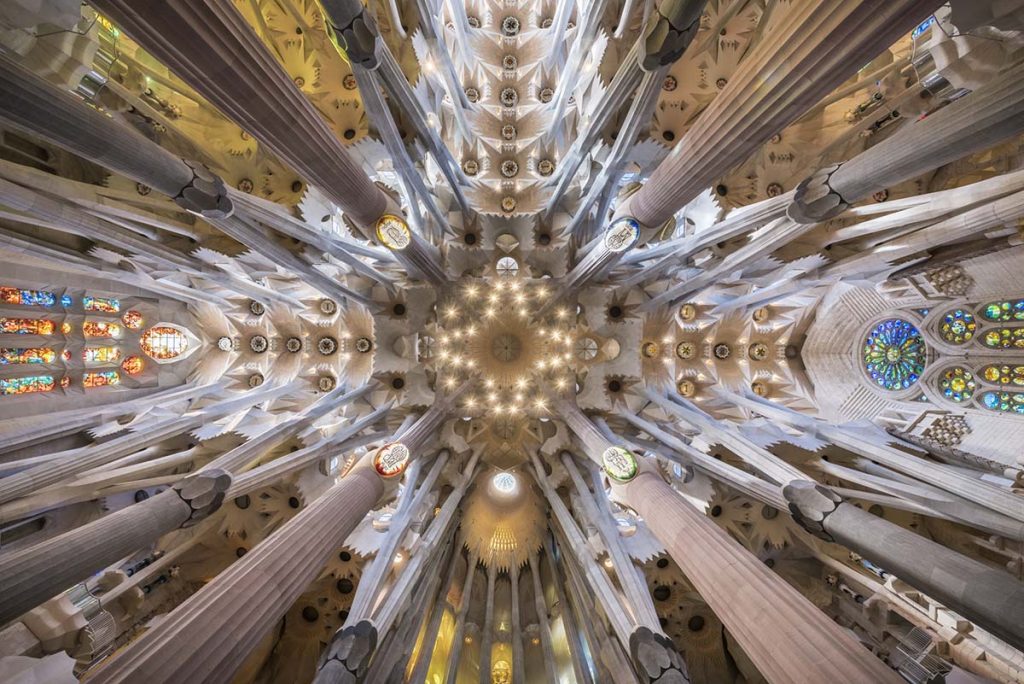
Its boundaries are non-boundaries — they are themselves spaces, just slightly denser, slightly more structured: more intricate, smaller spaces — stairs, passages, galleries. The boundaries of the inner space are outlined, hinted at — but not experienced.
The walls of the church are invisible from within: like these sequences of ever-diminishing numbers (as in 1/2, 1/4, 1/8, 1/16… ), always approaching zero, but never coinciding with it: we know the limit is there, but it is also not there — so does the inner space of Sagrada Familia approach its outer limits.
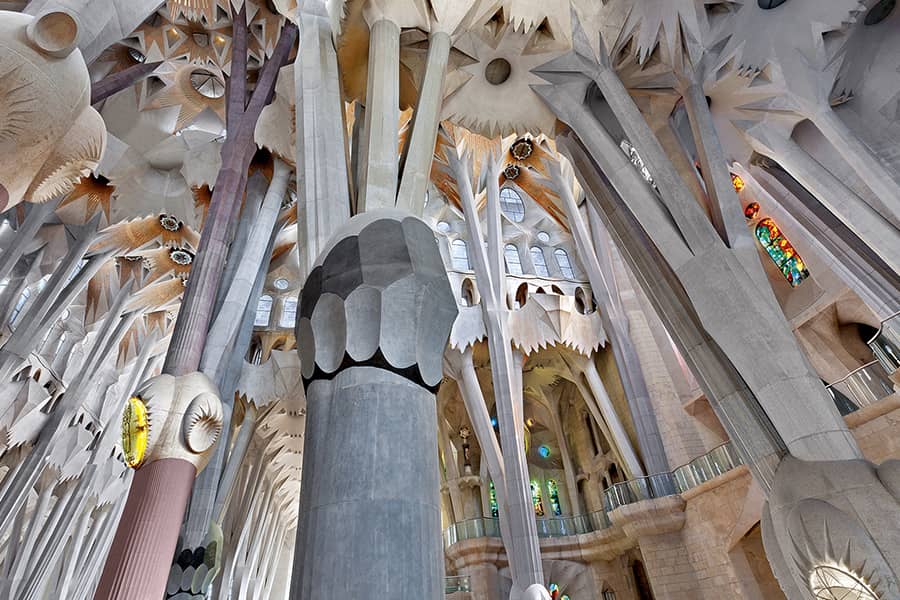
Let him go…
All the stories have been pushed outside, I said, but there is one exception: the Crucifixion, the tortured figure of Jesus Christ hanging in the centre…
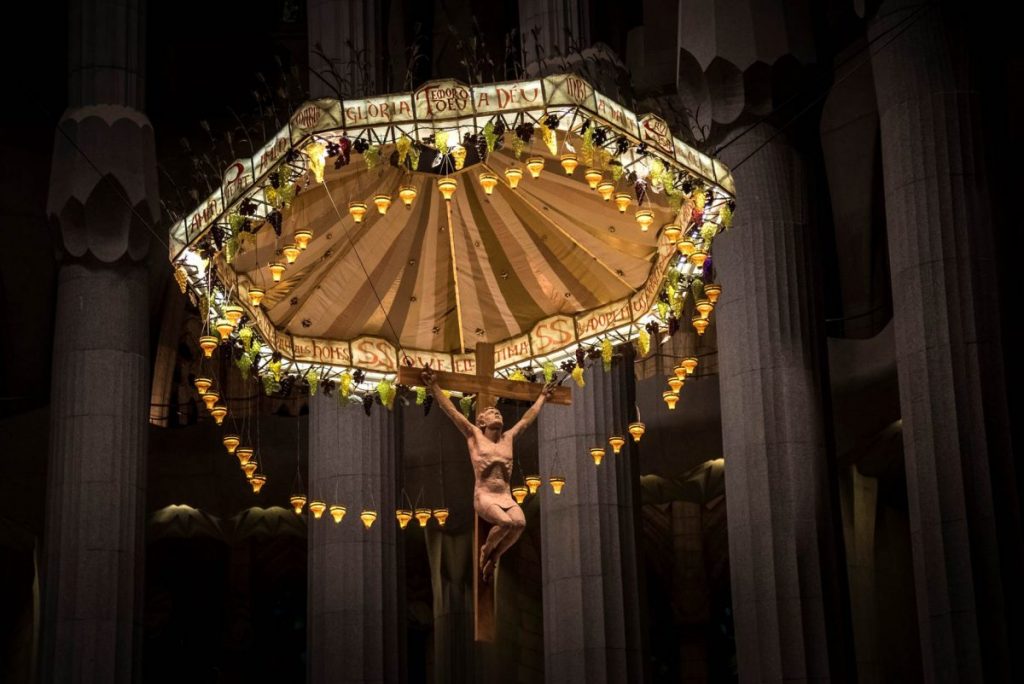
Seeing it all again, in my half-dream, half-awake state, I knew that this is the guilt, and the sin, and the (self)-resentment — the (self)-torturing mind right in the centre of its own inner space, surrounded by the fifty lights of Pentecost, with the triangle of Holy Spirit directed towards it from above.
I knew that all I need to do is just release Christ from there, just let him go — and so I did …
(you can do anything in a dream).
But something was missing, something had to be there, at the core, in the centre of this empty space.
It came to me a few moments later: it has to be a crystal, a reflective, multidimensional glass, multiplying the space manyfold, making it truly infinite, fully fusing the inner and the outer.
And with this realisation, I fell asleep again.
Next morning, I reread my journal from Barcelona and was surprised to see that our first visit to the Sagrada Familia was also preceded by a deep inner experience of forgiveness — but at the time, I didn’t connect these two experiences at all….
Vertigo of synergistic seeing
When I first entered the Sagrada Familia, back in May, I discovered that I was physically incapable of even being within its inner space. It was a vertigo-like, almost unbearable sensation — so we left very soon.
I was tempted to simply reject this experience, and this architecture — to move away, to forget it altogether, even if I knew that it won’t work, and that it is foolish and ultimately impossible to simply reject such a powerful experience.
In Art and Human Consciousness, Gottfried Richter writes about the evolution of architectural spaces as an outer expression of the evolution of consciousness, of the inner experience of being human.
But they are more than just an expression, because architectural spaces can also transform the inner spaces of individual humans who enter them — and thus replicate a newly emerging experience of self, a new stage in the evolution of consciousness. This is the phenomenon of synergistic seeing.
And this is what happened to me in Barcelona, I think: in the aftermath of this first visit, I felt a shift in my experience of self, in my inner space. More precisely, in what was perceived as being inside and outside of Self.
The point of view — my core perspective — was still very much anchored to the body, to the interior space of the body, but more loosely than it used to: it was as though the perceiving I-AM were not firmly within, just behind my eyes, but had moved slightly outside the familiar boundaries of the physical body.
It was as though the perceived outer world were Self, the outer regions of Self — and the interior, just an empty space, filled with connection to the depth.
This, I knew, was the experience of Sagrada Familia. The powerful newness of it caused my vertigo when I first entered it. When we went there again, a few days later, there was no vertigo anymore.
The healing of the wound
Just as I had to go to Sagrada Familia again to complete the transformation, so my Sagrada Familia semi-dream returned again, several days later.
This time, it started as a vision of human faces, fluid, transforming one into another, all-as-one. The faces were all structurally similar to mine and my father’s, and all variations in between. Only faces, looking out from the darkness and disappearing again.
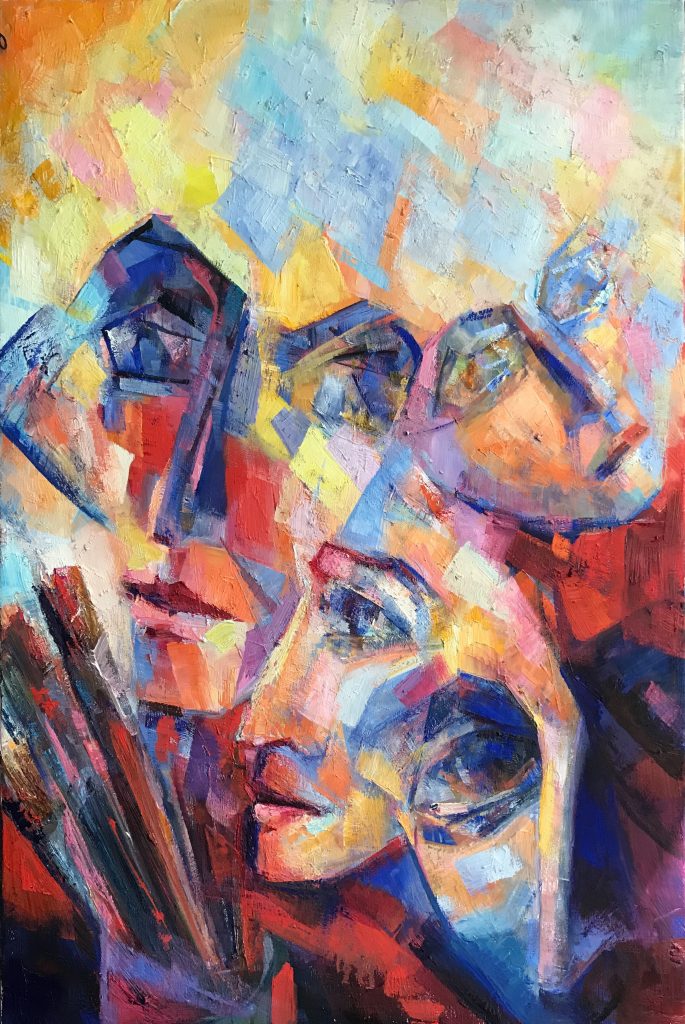
This wasn’t a new experience — I have seen it, and even painted it, before. But this time, it was as though Christ were somehow present in these faces. And as I accustomed myself to this strange, wordless experience, I felt this presence entering right into the centre of my body — through my chest.
I knew this was the final gift of Sagrada Familia — and that it couldn’t have happened while there was still torture and suffering in the centre of its interior, and in the core of my inner space.